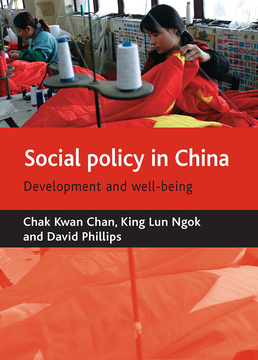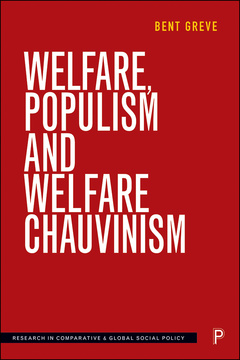Published
May 23, 2024Page count
246 pagesBrowse the series
Research in Comparative and Global Social PolicyISBN
978-1447357025Dimensions
234 x 156 mmImprint
Policy PressPublished
May 23, 2024Page count
246 pagesBrowse the series
Research in Comparative and Global Social PolicyISBN
978-1447357049Imprint
Policy PressPublished
May 23, 2024Page count
246 pagesBrowse the series
Research in Comparative and Global Social PolicyISBN
978-1447357049Imprint
Policy PressEast Asian societies and welfare systems are rapidly changing, creating an increasing need for research that can help to establish sustainable and legitimate welfare systems.
This original volume considers welfare attitudes in East Asia, including Mainland China, Hong Kong, Japan, Korea, Macao, Singapore and Taiwan, using qualitative and quantitative research methods. Proposing new methods and approaches to analysing cross-national variations in welfare attitudes, it decentralises dominant European-based concepts and measurements and takes approaches that are sensitive to cultural and political trajectories and the impact of colonialism and gender.
This book explores the influence of contextual and individual factors, such as family roles and values, on citizens’ welfare attitudes. It also studies social legitimacy and social bonds to understand how to design and implement sustainable welfare policies.
"As the focus of global economic and political activity shifts to East Asia it becomes increasingly urgent that we understand the attitudes that drive welfare policy in this region. This original book offers a broad-based approach that importantly shifts thinking away from the established Western perspectives." Peter Taylor-Gooby, University of Kent
Trude Sundberg is Senior Lecturer Social Policy in the School of Social Policy, Sociology and Social Research at the University of Kent and Director of the University of Kent's Q-Step Centre.
1. Introduction
2. Studying Welfare Attitudes
3. Trends and Approaches in East Asia
4. The Importance of Political Contexts
5. The Importance of Cultural Contexts
6. A Qualitative Study in Singapore and Mainland China
7. Conclusion













